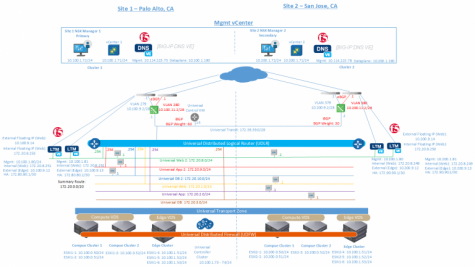
I also published this blog post about Multi-site Active-Active Solutions with NSX-V and F5 BIG-IP DNS on the VMware NSX Network Virtualization Blog on May 31, 2017. The full blog post is provided below and can also be seen on the VMware NSX Network Virtualization Blog site.
VMware NSX Network Virtualization Blog
Title: Multi-site Active-Active Solutions with NSX-V and F5 BIG-IP DNS
Author: Humair Ahmed
Date Published: May 31, 2017
I’ve written several prior blogs on multi-site solutions with NSX-V discussing topics such as fundamentals, design options, multi-site security, and disaster recovery; see below links to review some of the prior material. In this post, I’ll discuss how VMware NSX-V and F5 BIG-IP DNS (prior known as F5 GTM) can be used together for Active/Active solutions where an application is spanning multiple sites and site-local ingress/egress for the application is desired. F5 offers both virtual and physical appliances; in this post I demonstrate using only the virtual (VE) F5 appliances. Big thanks to my friend Kent Munson at F5 Networks for helping with the F5 deployment in my lab and for providing some of the details to help with this blog post. This is the first of several blog posts to come on this topic.
Prior NSX-V Multi-site and Disaster Recovery Posts:
- Cross-VC NSX for Multi-site Solutions
- Enhanced Disaster Recovery with Cross-VC NSX and SRM
- NSX-V: Multi-site Options and Cross-VC NSX Design Guide
- Cross-VC NSX: Multi-site Deployments with Ease and Flexibility
- Multi-site with Cross-VC NSX: Consistent Security and Micro-segmentation Across Sites
- Multi-site with Cross-VC NSX and Palo Alto Networks Security
- VMware NSX and SRM: Disaster Recovery Overview and Demo
With Cross-VC NSX, as shown in my prior blog post, Cross-VC NSX: Multi-site Deployments with Ease and Flexibility, there are multiple deployment options. A popular deployment model is shown bellow in Figure 1 where a single Universal Control VM peers with ESGs at both sites. BGP weight is used to control the egress point. BGP weight is used to enforce that all North/South traffic across both sites be sent out site 1 ESGs. In this example, the VMs on the Web tier (same subnet) are spanning both sites, but the BGP weight dictates via routing that all traffic egress site 1 ESGs. There are multiple options to control ingress traffic in this model, for example via route filtering on the site 2 ESGs or AS Path prepend on the ToRs. I’ve prior outlined these options in detail in the NSX-V Multi-site Options and Cross-VC NSX Design Guide.
In this deployment model, a single egress point at site 1 is used for North/South traffic for both sites; this simplifies deployment, maintenance, and troubleshooting, and, typically, customers investing in such a multi-site solution have a robust data center interconnect (DCI) for the typical 15 – 20% or less North/South traffic seen within a data center.
If the requirement is simply to utilize ESGs at both sites for different applications, a deployment such as the below can also be done. In this example, Tenant 1 applications, primarily at site 1, use the site 1 ESGs for North/South traffic and Tenant 2 applications, primarily at site 2, use the site 2 ESGs for North/South traffic. This is accomplished by simply deploying another Universal Distributed Router (UDLR) for Tenant 2 and using BGP weight to prefer the routes out site 2 ESGs.
Sometimes it’s desired to have Active/Active North/South connectivity for an application that is stretching across sites. For example, Web servers at site 1 should use the site 1 ESGs and Web servers at site 2 on the same subnet should use site 2 ESGs.
The application in this case is stretched across sites and we want to use the site-local ESGs for ingress/egress. There are a couple options here such as the Local Egress NSX feature and possible /32 host routes advertised by the ESGs. However, although possible, /32 host route injection would require additional automation to be done to account for when a VM vMotions across sites. In this post, we’ll discuss a solution leveraging F5 BIG-IP DNS alone which provides Global Server Load Balancer (GSLB) functionality. It is also possible to leverage the Local Egress NSX feature in combination with F5 BIG-IP DNS for specific use cases. This would require a slightly different design and will be discussed in a later blog post.
By using a GSLB solution such as F5 BIG-IP DNS with Cross-VC NSX, a complete solution for Active-Active with local site ingress/egress can be achieved for the desired applications as shown below. It should be noted, there are multiple NSX with F5 BIG-IP DNS deployment models that can be leveraged. In the below model, traffic that is initiated from the client and needs to be load balanced will leverage the local F5 LTMs for ingress and the return egress while other traffic that doesn’t have this requirement will use the respective ESGs based on the routing metric.

Figure 3: Cross-VC NSX and F5 BIG-IP DNS Multi-site DeploymentFigure 3: Cross-VC NSX and F5 BIG-IP DNS Multi-site Deployment
In this deployment two F5 LTM load balancers are deployed at each site in active/standby mode. There are four interfaces on the LTM VE appliance. In this example, the interfaces are used as such:
- Management interface: used for management of the LTM appliance and can be reached via web interface.
- HA interface: a heartbeat between the LTMs is used for monitoring and configuration synchronization purposes; in this case a NSX logical switch is used for this connectivity
- Internal interface: interface connected to the application network where servers that will be load balanced are connected; in this case the allocation network is also a NSX logical switch
- External interface: interface connected to the physical network
Source network address translation (SNAT) is done by the F5 LTM appliance and both an internal floating IP and external floating IP is configured as shown in Figure 3. As a client attempts to connect to a web server and makes a DNS request, the F5 BIG-IP DNS replies with the respective sites F5 LTM External Vitual IP (VIP) address. Which sites VIP is returned depends on the load balancing algorithm used. An example of this will be shown later in the post. Note, because this is a lab environment, private IP addresses were used. In the below screenshot of the site 1 F5 BIG-IP DNS, it can be seen there is an entry in the F5 GSLB Wide IP List that responds to A queries for demoweb.nsxlab18.local.
Looking at the associated pool (clicked 1 under Pools in Figure 4), we see that it has four members as shown below in Figure 5.
Clicking on the number 4 under members, we can see the site-specific LTMs and their associated VIPs. The active LTMs have a status of green and the standby LTMs have a status of red.
Also, note, in Figure 6, the Load Balancing Method is currently set to Round Robin. Since, in our current setup we have the Web application spanning both sites with one Web VM at each site, as clients make requests, they will be sent to the Web servers across sites in round-robin fashion. This is shown in the screen shots further below. The first query to the site 1 DNS server returns the External VIP for site 1: 10.100.9.14, a second query returns the External VIP for site 2: 10.200.9.14, a third query round-robins back to the External VIP for site 1: 10.100.9.14. The same behavior is seen when hitting the site 2 DNS.
F5 BIG-IP DNS supports numerous load balancing algorithms and can also distribute DNS name resolution requests using proximity-based load balancing. F5 BIG-IP DNS determines the proximity of the resource by comparing location information derived from the DNS message to the topology records in a topology statement that has been pre-configured. The Topology Load Balancing Method should be used if it is desired to send requests from a client in a particular geographic region to a data center or server located in that region; this effectively helps achieve site-local routing for active-active solutions. Figure 10 below shows the numerous load balancing methods that are available.
The F5 LTMs are monitoring the web servers that are part of a defined application pool. Figure 11 below shows this application pool as configured on site 1 LTMs.
In NSX-V, using local firewall rules, the local LTMs at both sites are blocked from load balancing received requests to web servers that are sitting at the other site. An example of the firewall configuration for site 1 is shown below in Figure 12. Thus, in Figure 11, since the Web VM with IP address 172.20.8.2 is sitting in site 2, the status on the pool member is red. In this case the setup is Active-Active, and the F5 BIG-IP DNS will load balance across sites to the Web servers as specified by the load balancing method.
If the Web VM at site 2 is vMotioned to site 1, the status of the respective pool member will turn green as shown below in Figure 13.
Now, if a DNS query is made, to any of the F5 BIG-IP DNS at either site, the External VIP IP address of site 1 (10.100.9.14) will always be returned as shown in Figure 14 below where 2 queries are made to the site 2 F5 BIG-IP DNS.
As mentioned prior, there are several NSX-V with F5 BIG-IP DNS topologies that can be utilized for different use cases. In this post, I discussed how VMware NSX-V and F5 BIG-IP DNS can be used together for an Active/Active solution for web applications spanning multiple sites where site-local ingress/egress for the application is desired. In future posts, we’ll look at additional topologies and how deployment of such a solution can be further automated. For more information on multi-site solutions with NSX-V, check-out my prior blog posts here and take a look at the NSX-V Multi-site Options and Cross-VC NSX Design Guide. For additional information on F5 BIG-IP DNS check-out the F5 Networks website.
Follow me on Twitter: @Humair_Ahmed



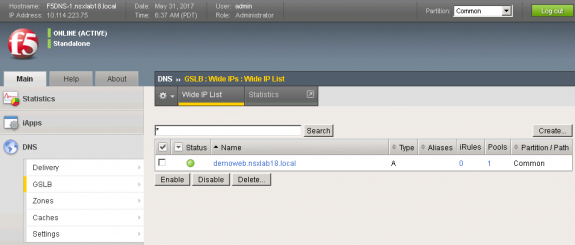
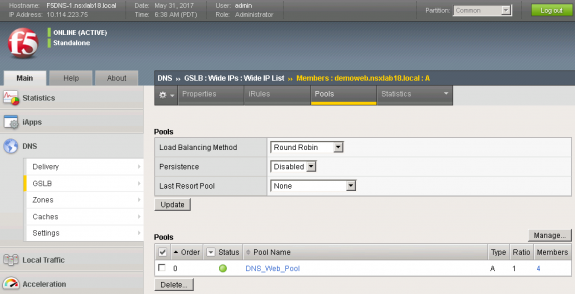
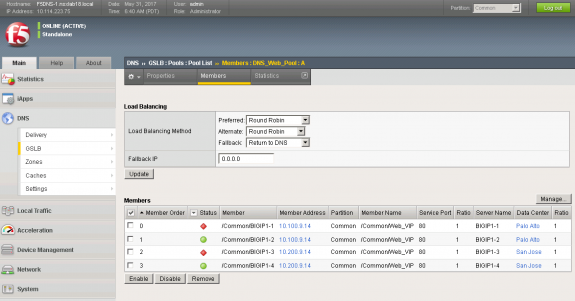

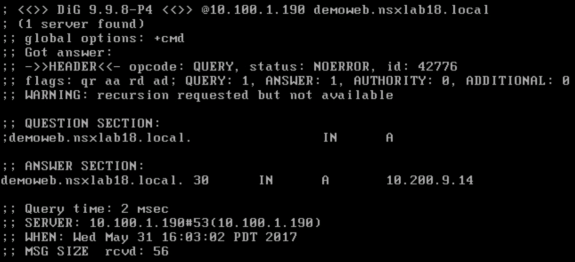
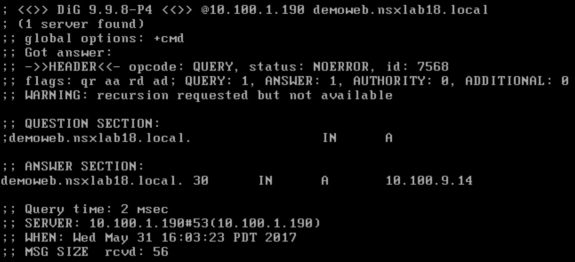
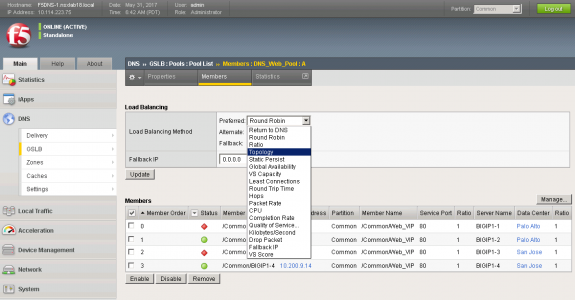


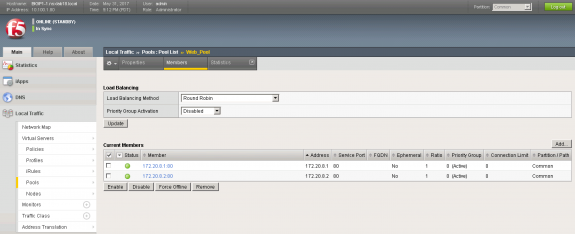
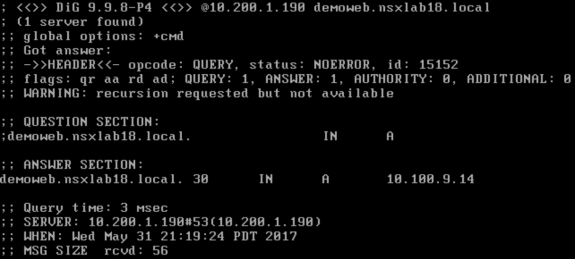



 Twitter
Twitter LinkedIn
LinkedIn Youtube
Youtube RSS
RSS
4 Responses to Multi-site Active-Active Solutions with NSX-V and F5 BIG-IP DNS